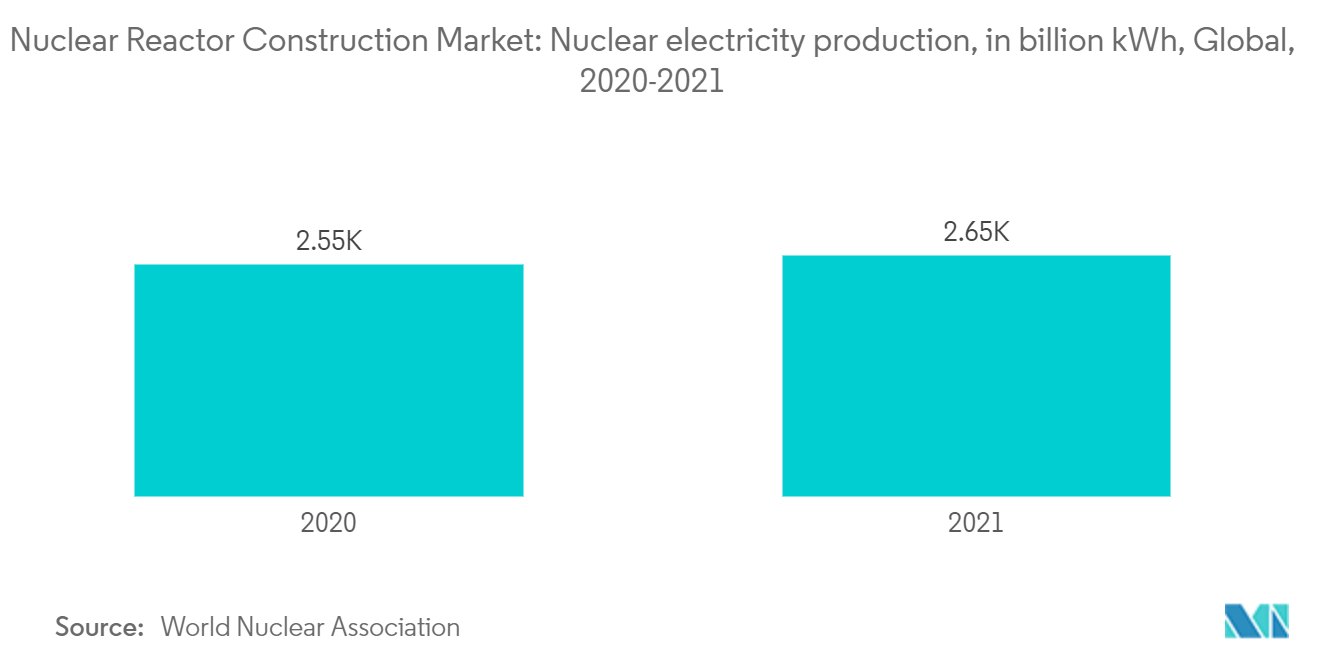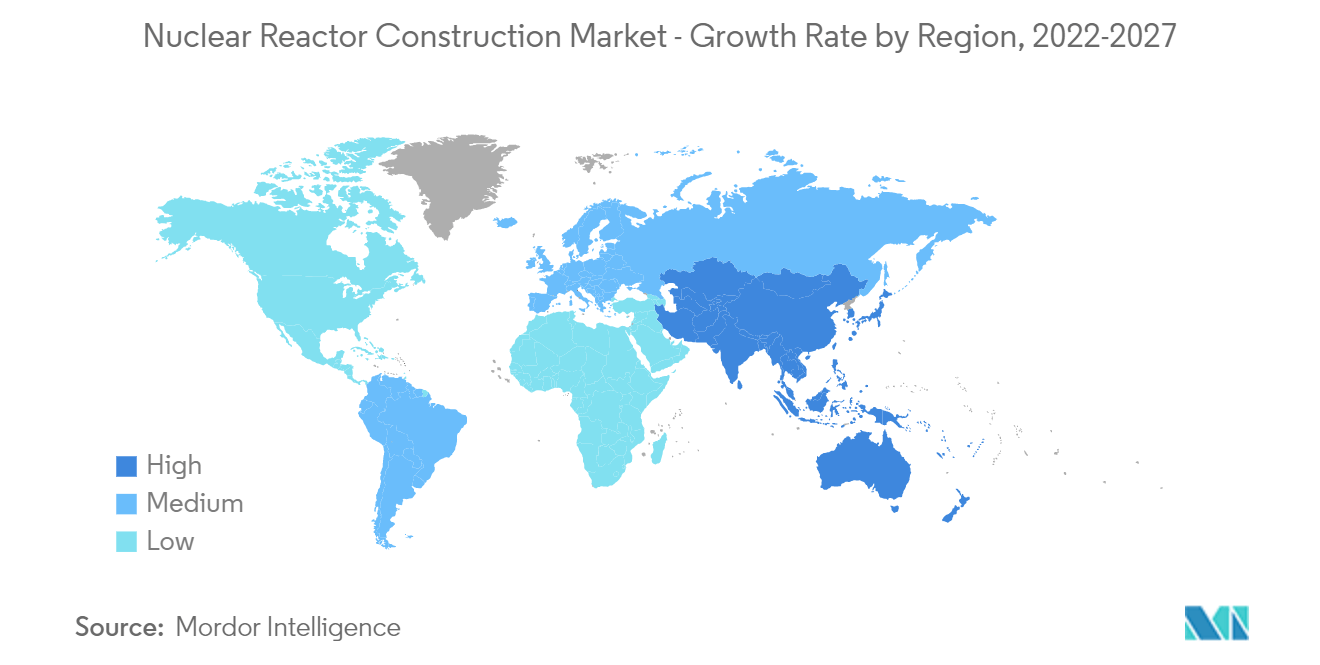Market Trends of Nuclear Reactor Construction Industry
This section covers the major market trends shaping the Nuclear Reactor Construction Market according to our research experts:
Pressurized Water Reactor to Dominate the Market
- Operators choose pressurized water reactors because they are the safest of all the nuclear reactor types since there are growing worries about the safety of nuclear power facilities. The PWR reactor also guards against radioactive material contamination of water, preventing environmental harm.
- As of 2021, With a total capacity of around 390 GWe, there are over 440 commercial nuclear power reactors operating in about 30 different nations. There are now being built about 60 additional reactors. Over 50 nations run around 220 research reactors, and another 180 nuclear reactors provide power for 140 ships and submarines.
- Moreover, In 2021, global electricity production by nuclear energy accounted for 2653 billion kWh. With an annual growth rate of 3.9%, electricity production is expected to grow through nuclear energy, which, in turn, creates demand for pressurized water reactors in the forecast period.
- The PWR is expensive to build because it needs strong pipes and a large pressure vessel to keep the highly pressured water in a liquid form while sustaining high temperatures. Therefore, the market for nuclear power plant equipment is anticipated to be highly impacted by the rising demand for PWRs throughout the forecast period.
- More than 90% of the future plants will use the PWR type of reactor. Hence it is projected that the PWR will dominate the projects in the Asia-Pacific region, particularly in China. Other than the current projects, a number of PWRs are being planned for construction in the upcoming years, which would propel the market for nuclear power plant equipment over the anticipated period.

Asia-Pacific Expected to Witness Significant Growth
- Several nations in the Asia-Pacific are planning and building new nuclear power plants to meet their rising need for clean electricity, in contrast to North America and Europe where expansion in nuclear electricity generating capacity has been constrained for many years.
- China had the largest nuclear energy new-build program internationally as of 2022. The robust project pipeline is anticipated to improve the outlook for the Chinese nuclear power market, which has previously experienced regulatory challenges as a result of the government's decision to halt nuclear reactor approvals until a re-examination of the plans was completed following the Fukushima Disaster in Japan in 2011.
- China develops nuclear power facilities using the most cutting-edge technology and exacting standards, and it closely controls every stage of a nuclear power plant's life cycle, from design to construction to operation to decommissioning. China had 54 operational nuclear power reactors with a combined capacity of 52.15 GWe as of December 2022.
- To fulfill the nation's rising need for electricity, the Indian government is committed to expanding its nuclear power-producing capacity. The Indian government projects that by 2031, the nation's nuclear capacity will be around 22.5 GWe.
- As of December 2022, the country had 22 operable nuclear reactors with a combined capacity of 6.79 GWe, and eight reactors with a combined capacity of 6.02 GWe are in the construction stage.
- Therefore, owing to the above factors, Asia-Pacific is expected to witness significant market growth during the forecast period.


